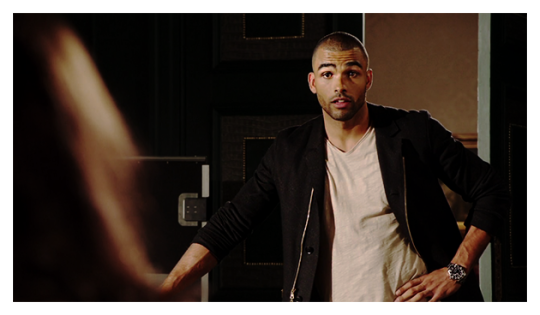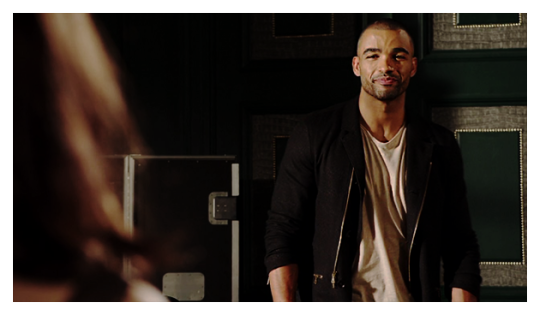#sebastian idrisi
Explore tagged Tumblr posts
Photo





#the royals#theroyalsedit#jaspenoredit#jaspenor#jeleanor#eleanor x jasper#sebastian idrisi#eleanor henstridge#jasper frost#princess eleanor#eleanor x sebastian#alexandra park#tom austen#myedits#bycyntheria
15 notes
·
View notes
Photo


Toby Sandeman as Sebastian Idrisi in The Royals 3x10
#the royals#the royals on e#theroyalsone#theroyalsedit#sebastian idrisi#sebastian the royals#prince sebastian#toby sandeman#jasper stan or not you can't deny that he's a handsome prince
20 notes
·
View notes
Video
tumblr
Sneak Peek The Royals 3x08 "Look Away, Jasper! Princess Eleanor Strips Down for a Naked Run With a New Man
#The Royals 3x08#The Royals 3x08 Sneak Peek#Sneak Peek The Royals#The Royals Season 3#Alexandra Park#Alex Park#Toby Sandeman#Sebastian Idrisi#Prince Sebastian Idrisi#Jaspenor#The Royals 3x08 Jaspenor
71 notes
·
View notes
Photo

theroyalsone: Drop a 🐯 below if you long to be part of this pack. #TheRoyals
#The Royals#Princess Eleanor#Eleanor Henstridge#Sebastian Idrisi#Rosie Hozier#Royals#3x08#Royals 3x08#The Royals 3x08
28 notes
·
View notes
Text
Why Early Cartography Doesn’t Work Well for Fantasy Maps
I got message in my inbox the other daaaaay…
“I’d love to see something from the Late Medieval or even Crusades period. Does the dearth of material from those eras prevent or make such a project more difficult? Are you simply uninterested?”
It’s a great question and one I’ve received several times in the last few years. The answer is longer and more complicated than it should be. We’re dealing with history and history is always messier than we’d like. Plus, I think it’s interesting enough that everyone will appreciate why I seem to ignore the Middle Ages’ maps in favor of later sources.
Also I blame Tolkien. (Nerd alarms sound!)
Strap in, cowpokes—I’m going history nerd on y’all.
Technology, Cartography, and Fan Expectations
We need to begin with technology. The proliferation of maps didn’t commence until after the printing press became ubiquitous. That’s why we have such an explosion of content after the 15th century. Before then, maps were all hand-made. Reproduction was difficult. You don’t find as many maps from those early eras, and often the maps you do find are reproductions done in a later style. That’s not to say they don’t exist, they’re just much different than the maps that came later, and they don’t correlate with what we think of as a map.
Then there’s the fan experience and the modern fan’s expectation. Fantasy maps serve a story, after all, and most fans want certain things from the map. Locations, distance, landforms, perhaps even enough to understand the climate. But the era of your typical fantasy novel is often set much earlier than the era of the printing press. (Yeah. Sure. It’s fantasy. And yeah, sure, you can fudge it.) But this is where it gets complicated.
In many ways, Tolkien is the one who set the expectation for fantasy fans. His famous map of Middle Earth, the one we all know and love, is more akin to cartography from the 16th, 17th, or 18th century than one from the Middle Ages. While it’s easy to point fingers, the reality is there is a good reason for his decision.
The art from the Middle Ages was weird.
Have you ever spent time looking at Western art from the Middle Ages at a museum? Notice how it’s always a little goofy? A bit off? Strange angles. Weird faces. There’s a flatness to everything. Eyes are looking in different directions. The artist had no idea what a cat looked like. The baby Jesus on Mary’s lap looks like a 34-year-old man. Camels look like horses and horses like goats. Trees are rendered oddly, and buildings are even odder. Art at this time was in its infancy and it’s like that with the cartography as well.
Let’s look at a few examples to see what I mean.
10th Century – Ende’s Map of the World – 975 A.D.

Map of the World – Ende – 975 A.D.
Most Western cartographers from the Middle Ages were monks, or in Ende’s case, a nun. The maps they made were often crafted alongside, or as a part of, “illumination” for religious manuscripts. Religious zeal tended to dominate many of those early Western works, making them almost useless as maps.
This “map of the world” is an excellent example of that fervor. It’s sparse, with more effort spent on the Garden of Eden cartouche than detailing the geography. It’s far different from the detailed maps we expect from our modern fantasy novels. Yet, the era it was created, the late 10th-century, is more often than not closer in era to our crafted fantasy worlds.
12th Century – Al-Idrisi’s Tabula Rogeriana – 1154 A.D.

Tabula Rogeriana (lit. “The Map of Roger” in Latin) – Muhammad al-Idrisi – 1154 A.D.
During the 10th century, most of the progression in the science of geography and cartography was coming from the Middle East. Most of our modern understanding of mathematics and science is rooted in discoveries from the early Muslim world. Cartography is no different.
Muhammad al-Idrisi’s Tabula Rogeriana is one of my favorite pieces from those times and is largely considered the height of early Muslim cartography. While this work is rendered upside down, with North being at the bottom (not uncommon for Middle Ages work), the map itself is incredibly accurate—while scale is still being sussed out, it’s easy to spot recognizable landforms.
It’s also stunning.
Colorful mountain ranges dance across beige landforms, green lakes and seas drain into rivers, which in turn empty into the deep blue swaths of open ocean. It makes for a beautiful piece of history. While you can see the roots for the hill-profile style that would become the norm in later centuries, it’s quite different from maps we find in the opening pages of a novel. Everything here is a bit flashy, more like a painting—whereas, with later maps, engravers began using the symbols we expect. The map itself shifted in later years to become a tool for the commoner, not a piece of art for a fancy king named Roger.
13th Century – Matthew Paris’s Britain – 1259-ish A.D.

Britain – Matthew Paris – Around 1259 A.D.
The other approach we find in the Middle Ages was more typographical. Take this 13th-century map of the British Isles from the Benedictine Monk Matthew Paris. It’s not bogged down in religious fervor the way Ende’s map was—but it’s also not as detailed as one would expect.
There are only a few signs and symbols, and much of the heavy lifting is done with text. Beyond the coastline, there is very little in the way of landforms. No flora is present. No mountains—well, maybe one mountain. Few rivers. And this is the 13th Century! We’re nearly three hundred years after Ende crafted her map, and still two hundred years before duel-beard wielding Johannes Gutenberg would invent his printing press. And etching—the process that rendered many of the maps that influence fantasy cartography today—wouldn’t show up on the scene until seventy-five years after that.
But you can see the origins of what was to come. You can see symbols begin to creep into the idea of a map. You can see where cartography is going.
I once read an article that compared these early maps to “storytelling” rather than representations of geography. This was undoubtedly the case in Western cartography during the Middle Ages. These maps serve to enforce a narrative. But beyond that narrative, most are unusable. They’re paintings. Piece of art. They’re not tools. We see more cartouches and illustrations than useful signs and representational symbols. This is why I avoid using these as a base. There aren’t enough signs to make a robust set, and the signs and symbols that exist are very limited. This is why early cartography and Middle Ages’ sources won’t make practical brush sets.
The Silver Lining
I don’t think all hope is lost. While it’s theorized to be a bit earlier than the Middle Ages, I think there’s potential for some sort of set to come from the Tabula Peutingeriana, an early map of the Roman Empire.

A small fraction of the Tabula Peutingeriana Facsimile Edition – Konrad Miller – 1887
I’m not sure how effective it’d be from a landform-perspective, but there are so many variances in the Roman settlements that I could see it working for the right project. The trick will be finding a decent source, it’s been reproduced so many times and every time there are slight variations. Plus, I’ll need to dust off my High-School Latin before I tackle it.
There’s also an opportunity with some of Sebastian Münster’s or Girolamo Ruscelli’s work. It’s early as far as the hill-profile style goes, but it somehow feels older even though both are from the 16th century. The downside is most of the individual maps are fairly light in the number of symbols present, so I’ll need to pull from multiple sources. Unfortunately, neither did an outstanding job maintaining a uniform size with their signs or keeping line strokes consistent. Not impossible to overcome, but it is time-consuming.

Map of the Levante – Girolamo Ruscelli – 1561

Map 18 – Northern Europe – Sebastian_Münster – 1545
In Conclusion
There are going to projects that will benefit from the earlier styles of cartography. The maps I shared are stunning and fantastic pieces of history. Creating in-era ephemera can add a level of authenticity to a story, and any of the pieces I shared would be great to replicate for the right project. But for those, I think proper illustration goes a lot further than trying to shoehorn brush sets into cartographic development. In those cases, one would be better off hiring an illustrator.
I design my brushes to help non-designers create period-authentic maps. For the vast majority of fantasy projects, I think mimicking the hill-profile style will satisfy fans. Tolkien chose it for a reason. It’s easy to wrap your head around and still feels properly antiquated even if it doesn’t precisely match era to era. It’s become the defacto fantasy style, and for a fantastical world, and you know what? That’s more than acceptable.

Want to stay in touch with me? Sign up for Dead Drop, my rare and elusive newsletter. Subscribers get news, previews, and notices on my books before anyone else delivered directly to their inbox. I work hard to make sure it’s not spammy and full of interesting and relevant information. Sign Up Today→
from WordPress https://ift.tt/3oEbUjM via IFTTT
0 notes
Photo

Sebastian created a wedge between mother & daughter - has their relationship completely healed? Tweet in 4 days to save our show and get more answers! 9 PM your time, September 14th. Use #longlivetheroyals
3 notes
·
View notes
Video
tumblr
Toby “Sebastian Idrisi” Sandeman will be in 4x09
17 notes
·
View notes
Photo

It’s time to ”Name that actor” (who can recognize the bottom row):
1. Elizabeth Hurley - Helena Henstridge
2. William Moseley - Liam Henstridge
3. Alexandra Park - Eleanor Henstridge
4. Jake Maskall - Cyrus Henstridge
5. Tom Austen - Jasper Frost
6. Max Brown - Robert Henstridge
7. Victoria Ekanoye - Rachel
8. Genevieve Gaunt - Wilhelmina Moreno
9. Rocky Marshall - James Hill
10. Tom Christian - Brandon Boone
11. Christina Wolfe - Kathryn Davis
12. Miley Locke - Sara Alice Hill
13. Sarah Armstrong - Rosie
14. (Sasha Jackson - Lana) or (Scarlett Archer - Dame Cinnamon) ?
15. Toby Sandeman - Sebastian Idrisi
16. Lily Loveless
17. ?
18. ?
19. ?
20. Margo Stilley - Harper
21. ?
49 notes
·
View notes